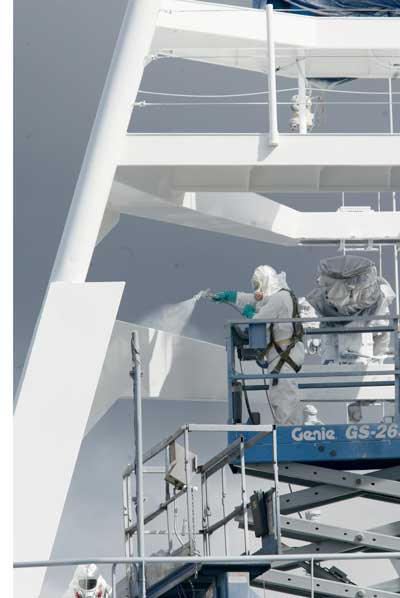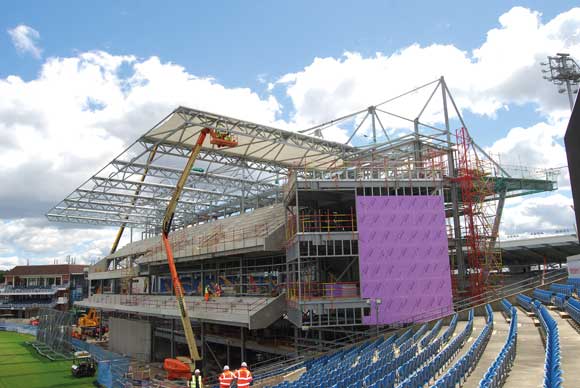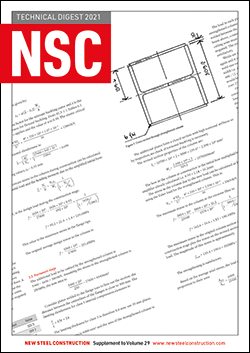Technical
AD 412: Issues related to coatings and availability of structural fasteners
Recently, SCI has received some queries related to the coatings and availability of structural fasteners. This advisory desk note addresses some of these issues.
It is probably useful to clarify the terminology applicable to zinc-coated bolts, nuts and washers. There are currently three common standardized types of zinc coating in use in the construction industry – galvanized, sherardized and electro-plated.
Galvanized, used correctly, means ‘hot-dip galvanized’ – a process of dipping in molten zinc. In the case of bolts and nuts, after dipping they are normally spun in a centrifuge while the coating is still fluid to clear the threads of excess zinc. This is described as ‘spun galvanized’.
Sherardized means zinc-coated by a special process involving heat and zinc dust, normally carried out in a rotating drum.
Electro-plated, as the name implies, means coated by a process of electrolysis, which involves immersion in an acid.
Regrettably, ‘galvanized’ is sometimes used more loosely, either to mean any zinc-coated fastener, or any except electro-plated. This is confusing and should be avoided.
Q1. There appears to be a shortage of sherardized bolts in the market, do you know why this is? And what is the recommendation to use as an alternative? Electro-plated or hot-dip galvanized bolts?
A1. The shortage of sherardized bolts is generally a reflection of market demand with the hot-dip galvanized and electro-plated finishes dominating the structural bolting market with rough approximation of a 70 % hot-dip galvanized / 30% zinc-plated. Another factor is that the vast majority of non-preloaded bolting assemblies are imported and since sherardizing is not generally available in the manufacturing markets, sherardized structural bolts are more expensive
Q2. Bolt galling/lock up, does this become more of a problem with hot-dip galvanized bolts?
A2. Galling is not a problem with non-preloaded structural bolting assemblies whether hot-dip galvanized or zinc-electroplated. In the distant past there could be problems with hot-dip galvanized bolting assemblies because of excessively thick, uneven or rough coatings. However, these problems do not affect the current hot-dip galvanized structural bolting assemblies available in the UK market.
Q3. My understanding is a lubricant should be applied to prevent this, but should you only really need to use a lubricant in pre-loaded bolt assemblies? Or in all cases?
A3. For pre-loaded assemblies, it is a requirement of the European standards (EN 14399 series) that bolting assemblies are supplied with suitable lubrication to ensure satisfactory installation. However, it is essential that these assemblies are stored in suitable dry and well ventilated storage conditions to ensure there is no deterioration of the lubricant on site prior to installation. Provided the storage conditions are suitable no additional lubrication should be necessary.
In preparation of this AD note, SCI acknowledge assistance provided by Mark Tiddy of Cooper & Turner (bolt manufacturers).
Contact: Abdul Malik
Tel: 01344 636555
Email: advisory@steel-sci.com












